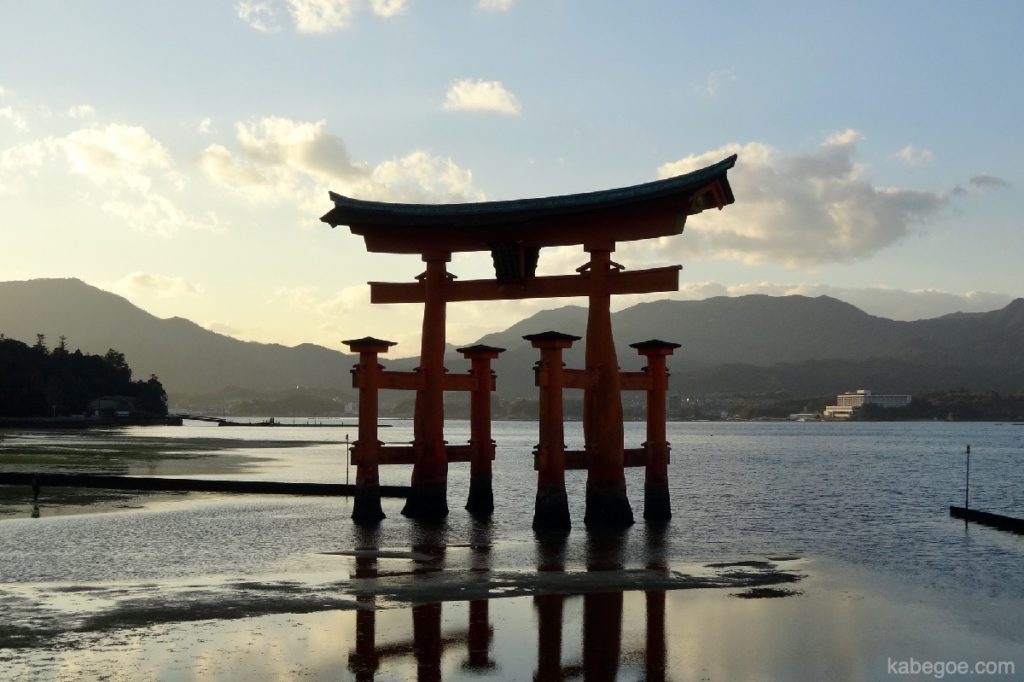
Recommended for such people
・ I want to know the reason why it was built in the sea
・ I want to know the recommended time zone
What is Itsukushima Shrine?
Itsukushima Shrine is a shrine located in Miyajima, Hiroshima Prefecture.
Famous for its floating appearance on the sea, it has been selected as a World Heritage Site and one of the three most scenic spots in Japan. (The other two are Amanohashidate in Kyoto and Matsushima in Miyagi)
This time, I would like to introduce you to Itsukushima Shrine.
Why it's on the sea
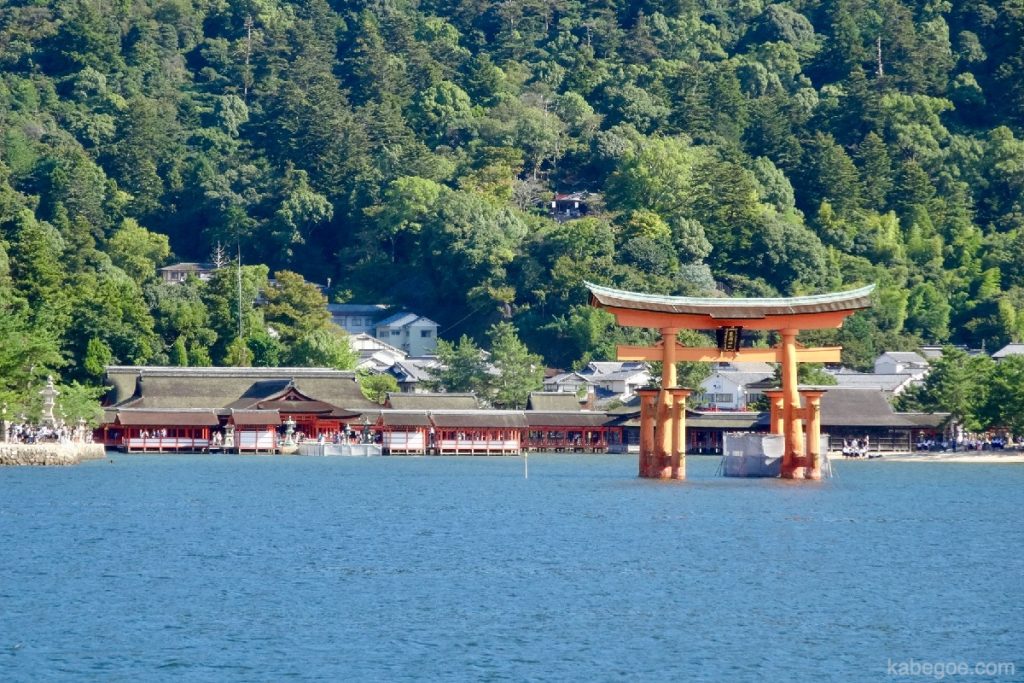
The reason why Itsukushima Shrine was built in the sea is that Miyajima as a whole is considered to be a god.
It was built on the sea in 1168 with the help of Taira no Kiyomori because it is impossible to shave the island that is the god. (It was founded in 593)
It was an era when the Heike made a lot of money from the Japan-Song trade and said, "I'm not a Taira clan, I'm not a person."
Recommended time zone
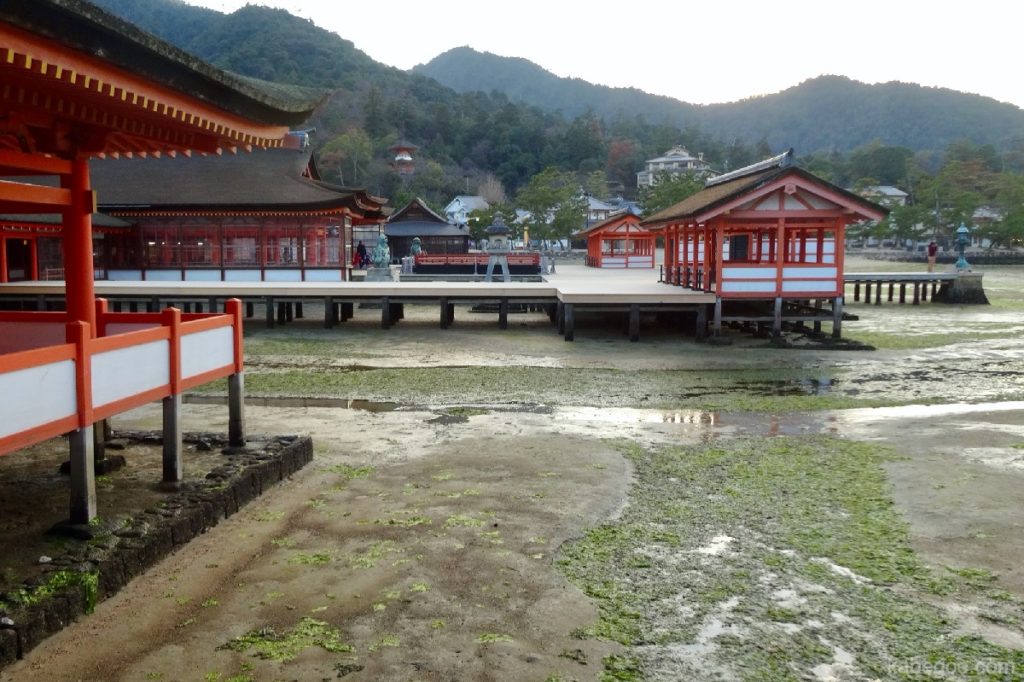
We recommend it at high tide when the sea level is rising.
I went without knowing anything at low tide when the water level was low, and I was disappointed, "Oh? I'm not floating in the sea ...".
The time of high tide changes depending on the season, so check the website of Miyajima Tourist Information Center.
Tide list: Miyajima Tourist Information Center
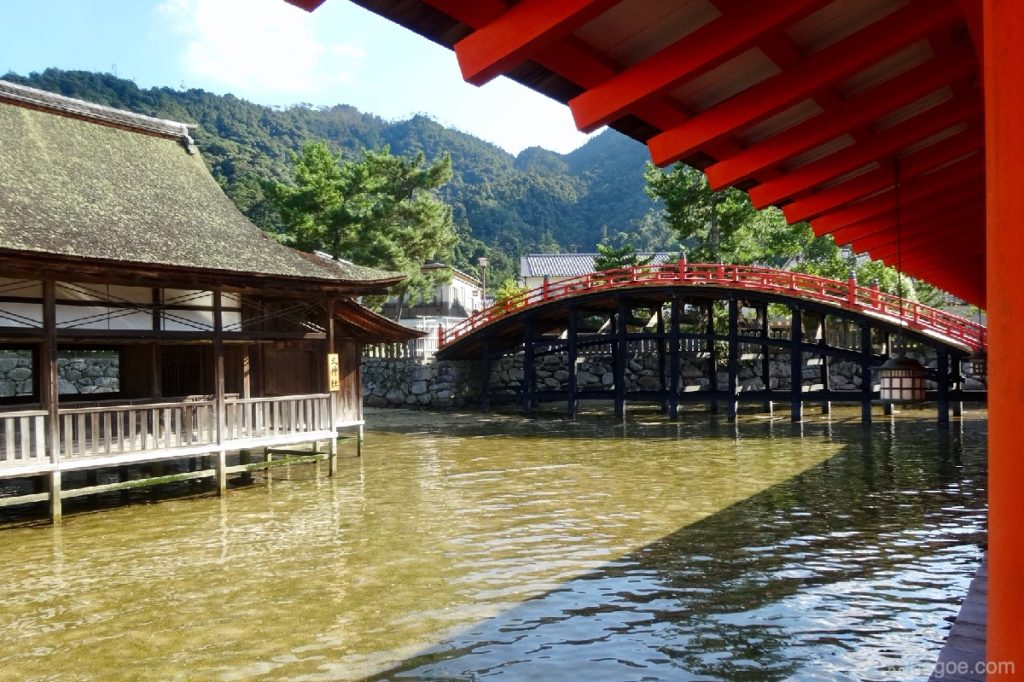
I couldn't help it, so I revenged at a later date.
After all it is a place you want to go when the water level is high.
I sometimes advertise that "I can walk to Otorii at low tide when the water level is low!", But I don't personally recommend it because my feet get dirty and Otorii is a little dirty when I see it nearby.
Origin of Itsukushima
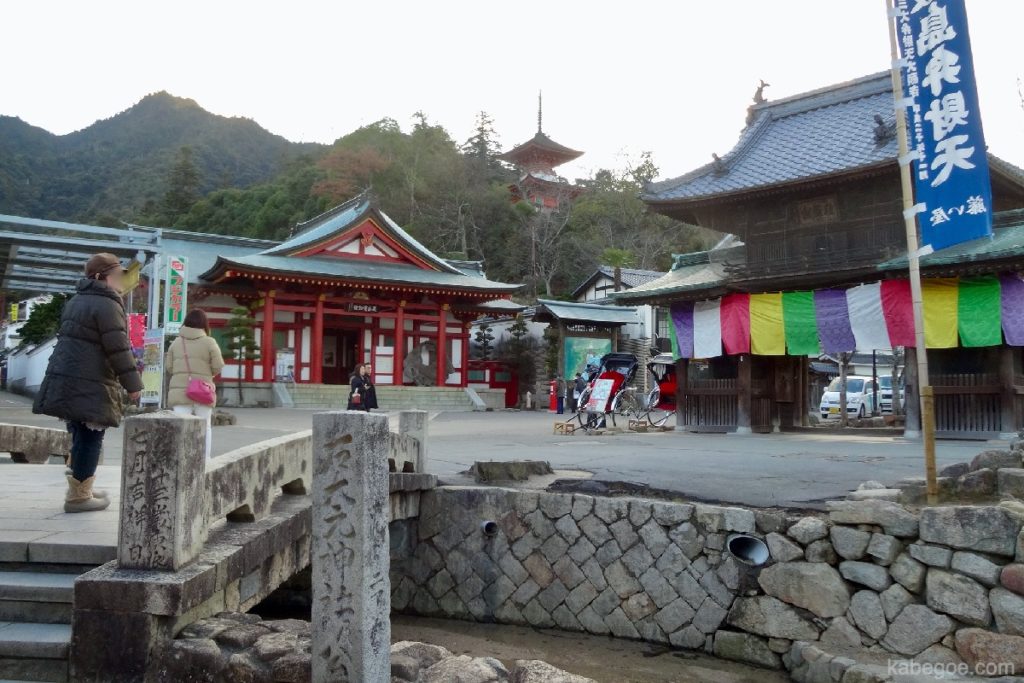
"Itsuku to God" is the etymology of Itsukushima.
However, "Itsukushima" seems to have a bad pun, and since the Edo period, it has come to be called "Miyajima" because it means "miya", which means a shrine.
The official place name has now changed to Miyajima-cho, but the name of the shrine is still familiar to Itsukushima Shrine.
Highlights
Let's introduce the highlights.
Omotesando Mikasahama Ishitorii

The only way to get to Itsukushima Shrine is to take a ferry.
After arriving at Miyajima and walking along the coastline for about 10 minutes, you will see the entrance to worship.
The pine trees are also overgrown and the atmosphere is perfect.
Main hall
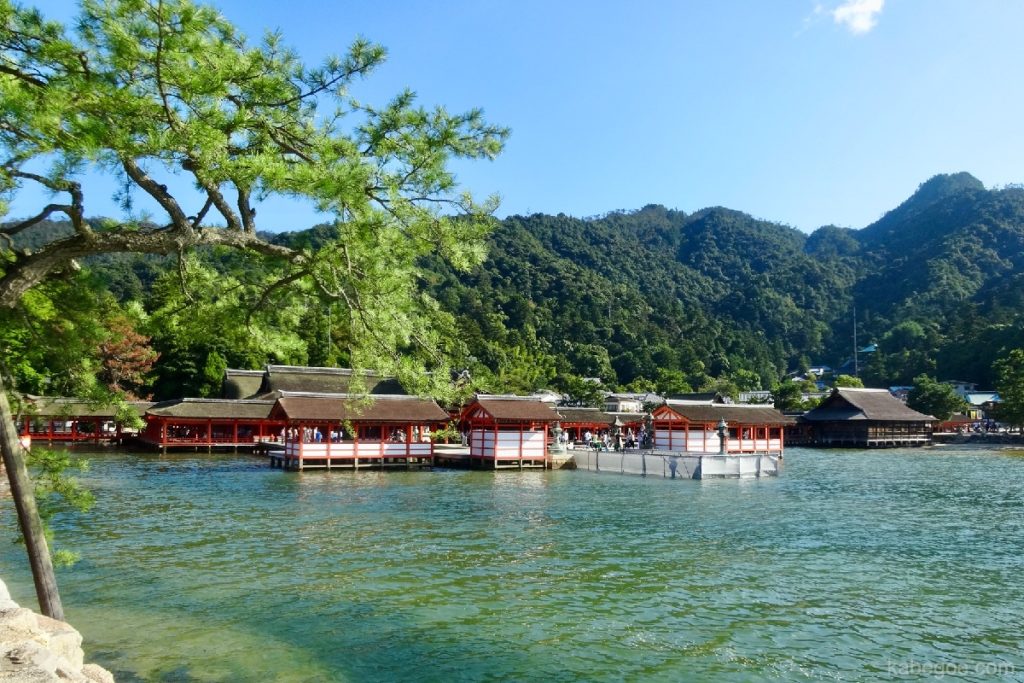
If you walk a little further, you will see the main shrine.
The Three Goddesses of Munakata are worshiped as the god of water, the god of transportation, and the god of wealth.
It is said that traffic safety (both at sea and on land) has the greatest benefit.
Worship entrance
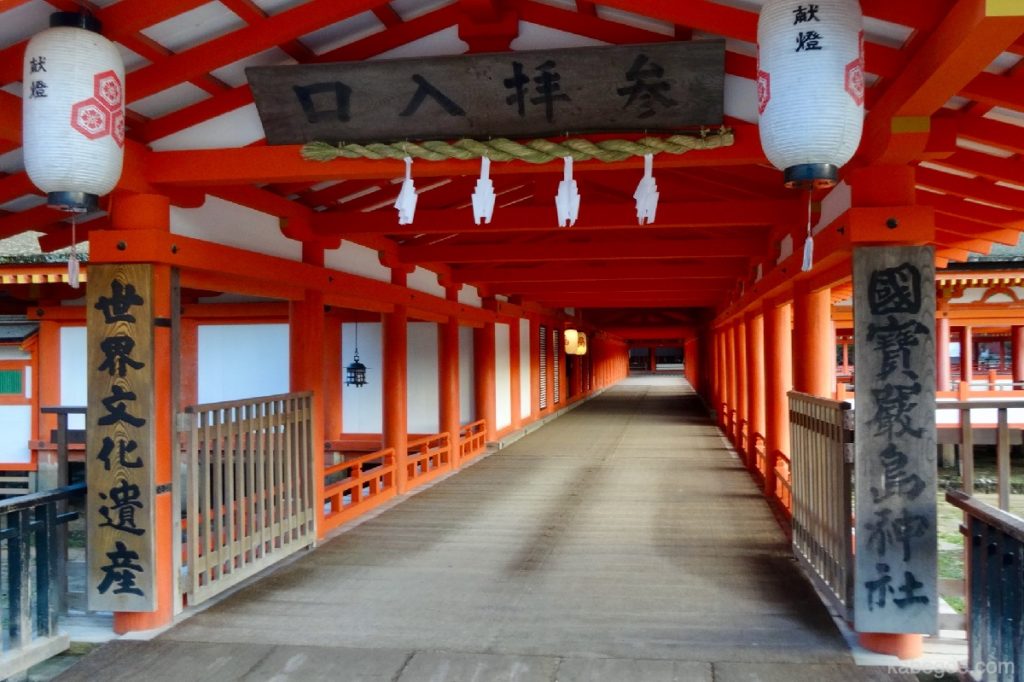
We will pay the entrance fee and proceed.
There is a slight gap in the floorboard, and it is devised so that the seawater that has jumped up can escape.
Masugata
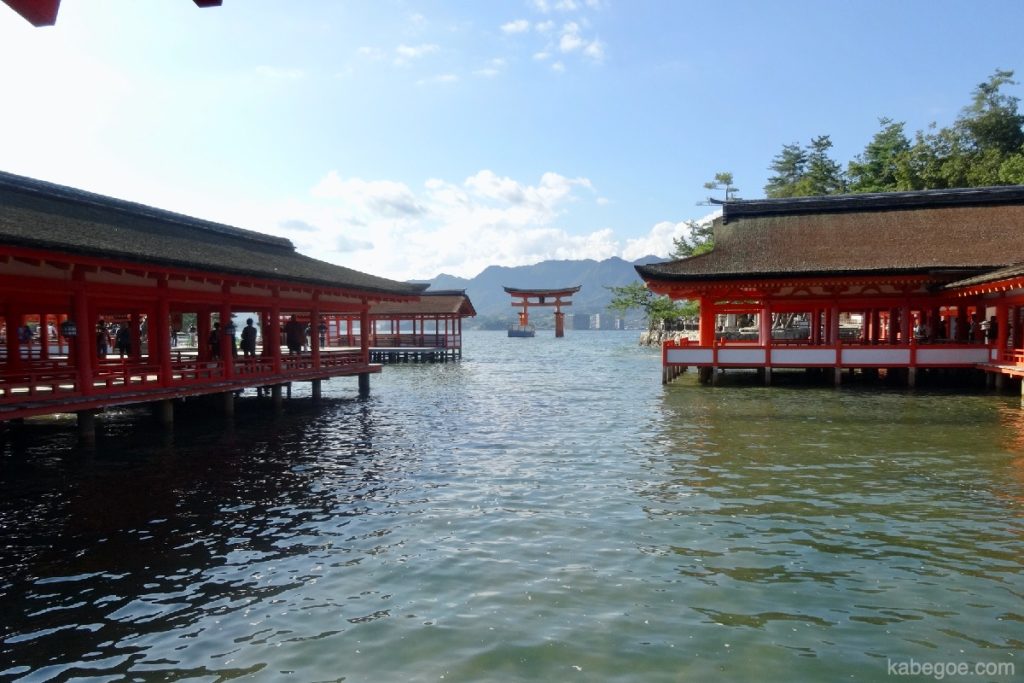
The place surrounded by this corridor is called a box shape.
It is a shooting spot where you can see Otorii in the distance.
Don't say, "Somehow the seawater is dirty ...".
Otorii
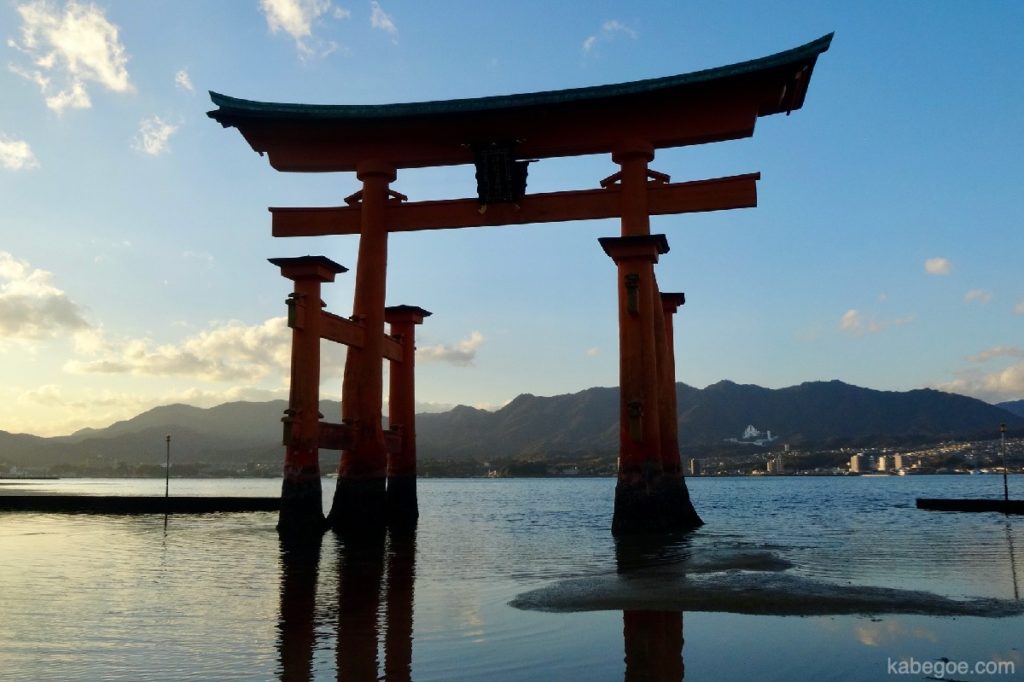
The Otorii is 16.6m high and weighs 60t, and stands entirely under its own weight.
(Piles are not driven into the ground)
The current torii is the 8th generation from the Heian period and was rebuilt in 1875.
The material used was camphor tree, which is about 600 years old.
Even though it is maintained, camphor tree is amazing to have it on seawater for more than 100 years.
Five-storied pagoda

There is also a magnificent five-storied pagoda on the land side.
Built in 1407, it is also designated as an important cultural property.
Miyajima Omotesando Shopping Street
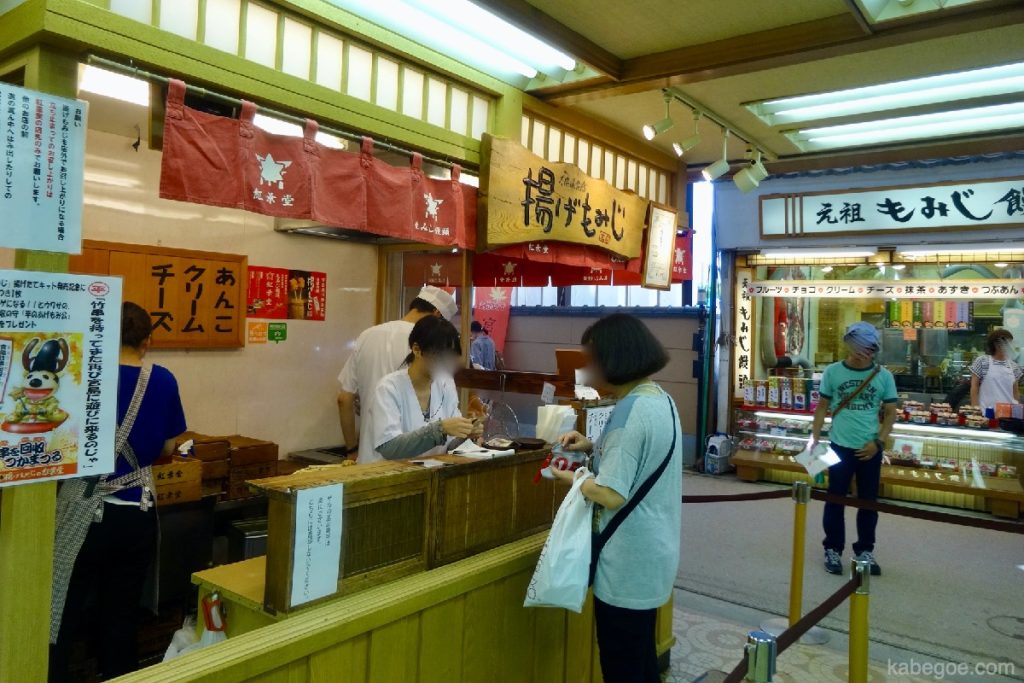
Miyajima has a shopping street with souvenirs and local gourmet food.
It's on the way from the ferry to Itsukushima Shrine, so let's go.

It is a specialty of Momijido Honten, "Agemomiji".
Literally, Momiji Manju is fried.
Let's eat it as a memorial.
The best rice scoop in the world
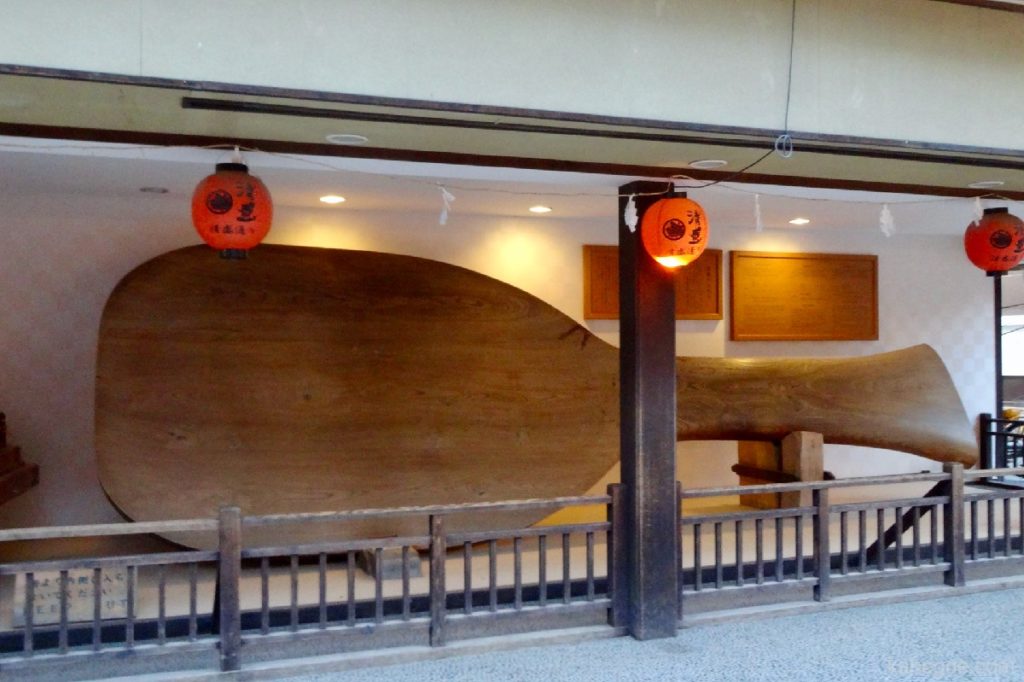
Miyajima is the number one rice scoop producing area in Japan.
In the shopping district, the world's best rice scoop, which is 7.7m long and weighs 2.5t, is on display.
(It seems that it will move to the site of Miyajima City Hall in April 2021)
Miyajima Deer
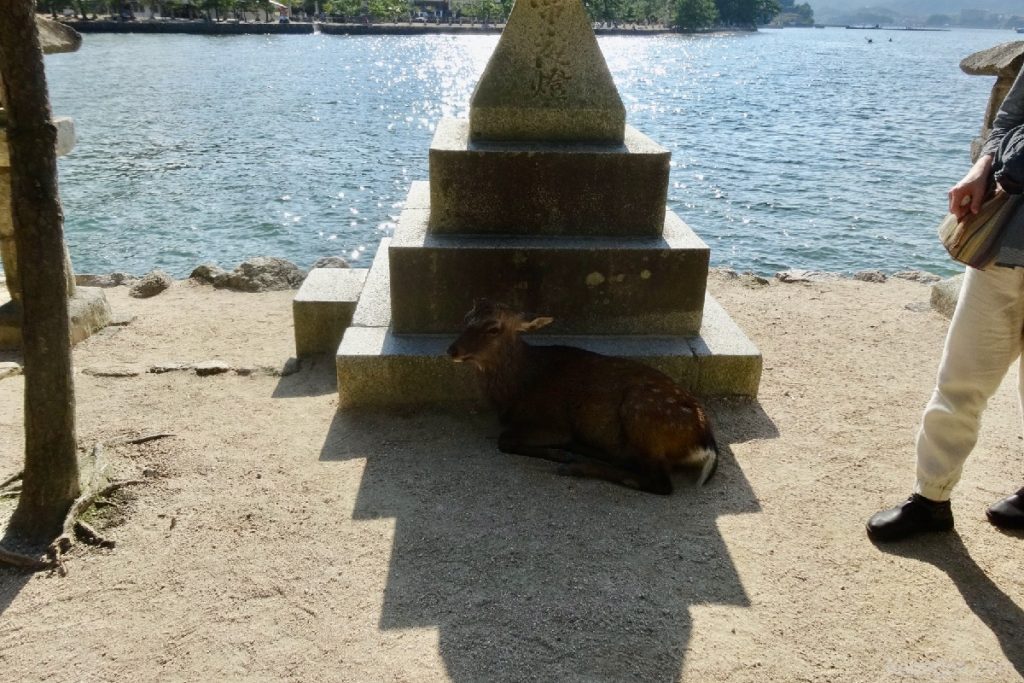
There are many deer in Miyajima.
When you think of deer, you might think of Nara Park, but while deer in Nara have their origins as messengers of God, deer in Miyajima are "just wild deer."
The whole island is a god, and the deer that live there must not be killed, so the deer breeded as they do today.
Worship fee and time required
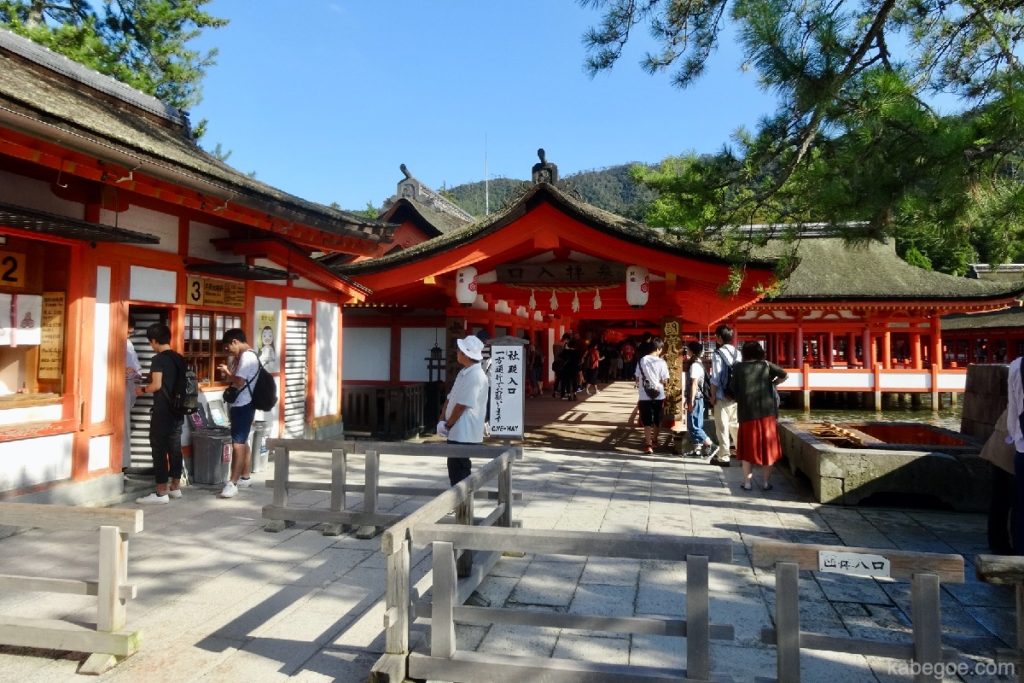
The worship fee is 300 yen.
The time required is about 60 minutes for the shrine + 60 minutes for the surrounding facilities, and I think it will take about 120 minutes in total.
(Times for ropeway and Miyajima Aquarium are not included)
Access
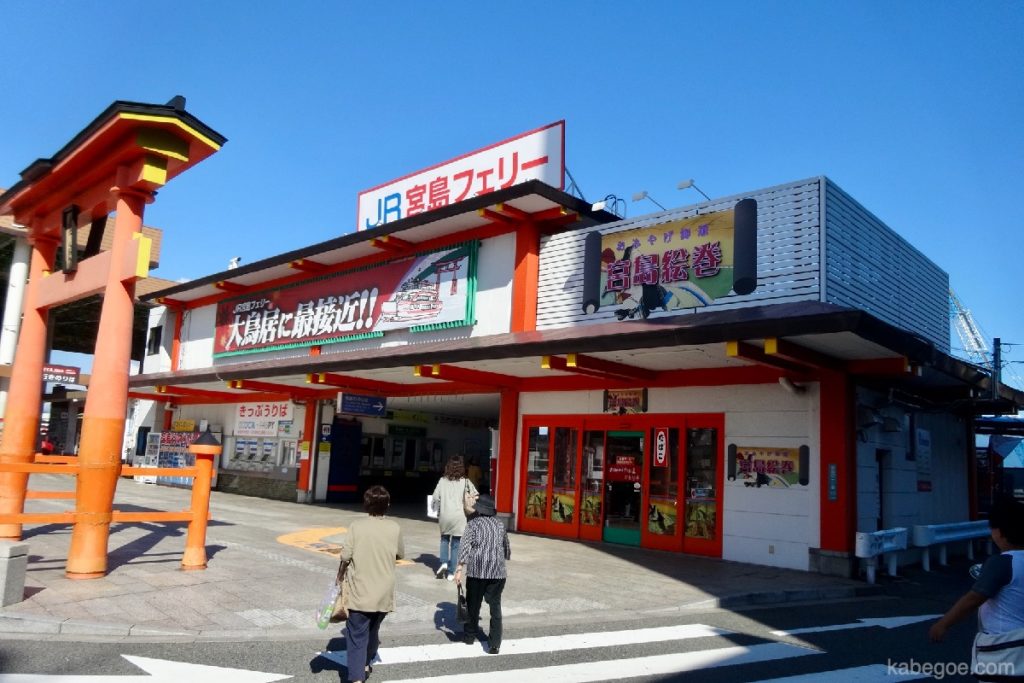
It takes about 10 minutes by ferry from JR Miyajimaguchi Station or Hiroden Miyajimaguchi Station.
The ferry company says "JR West Miyajima Ferry"When"Miyajima Matsudai KisenThere are two companies.
Both are basically the same, so let's get on the one with the shorter waiting time before departure.
(JR West Miyajima Ferry is better depending on the time of dayApproaching the toriiWill do it. )
The fare is 180 yen one way, which is a reasonable price for a tourist destination.
Finally
In order to enjoy Itsukushima Shrine, you have to be careful about the time of high tide and low tide.
Also, since it is built in the sea, there are some dirty parts, so I made it one star.
That said, it is one of the most representative landscapes in Japan, so let's go there once in your life.
Tourist information around
Shukkeien
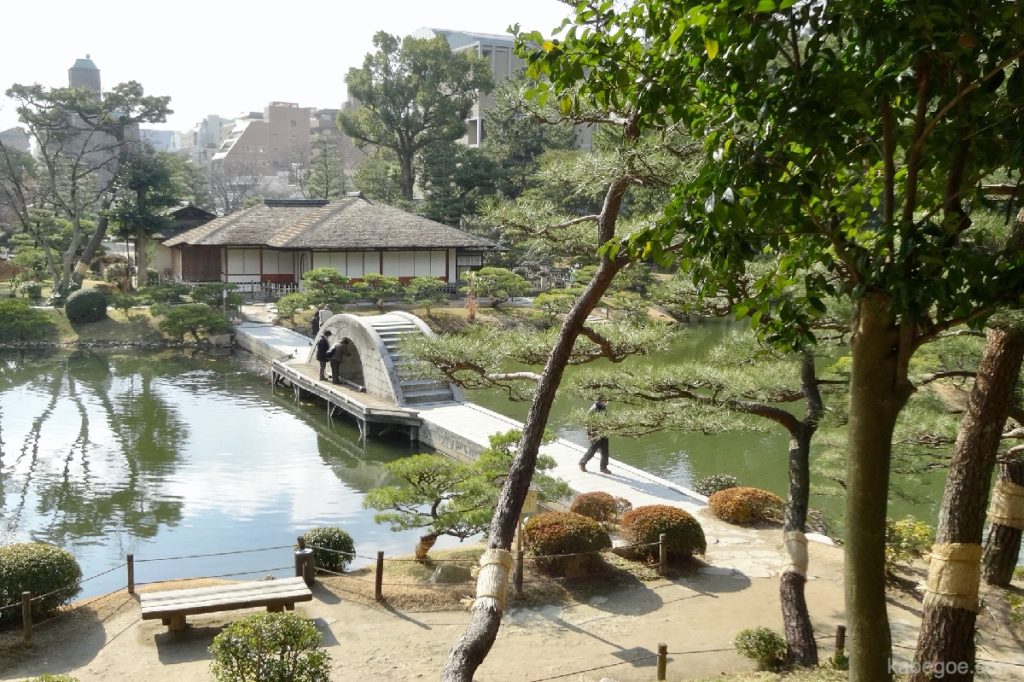
It is a garden in the center of Hiroshima city.
With a history of 400 years as a daimyo garden, it is a quiet space that you can't imagine in the city.
You can see various flowers depending on the season, so let's go when you want to relax.
Hiroshima Museum of Art
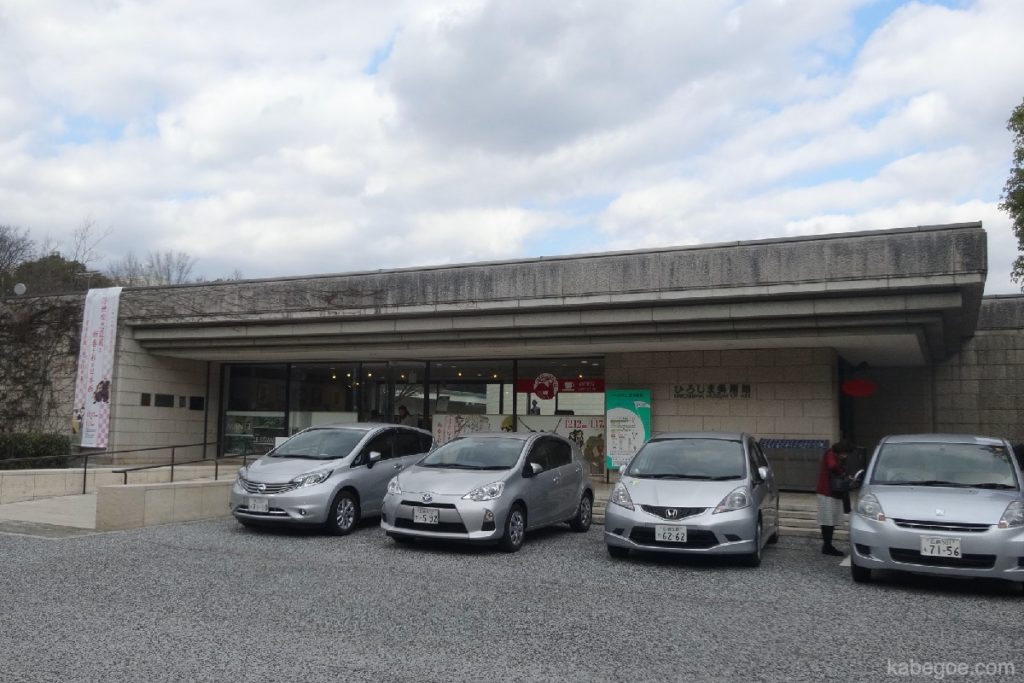
This is also an art museum in the center of Hiroshima, about a 15-minute walk from Shukkeien.
The quality of Western painting collections such as Van Gogh, Monet, and Signac is so high that I think they will be in the top three in Japan.
You can see all the famous artists, so it is recommended for those who are new to the museum.
Be careful not to mistake it for "Hiroshima Prefectural Museum of Art," which has a similar name.